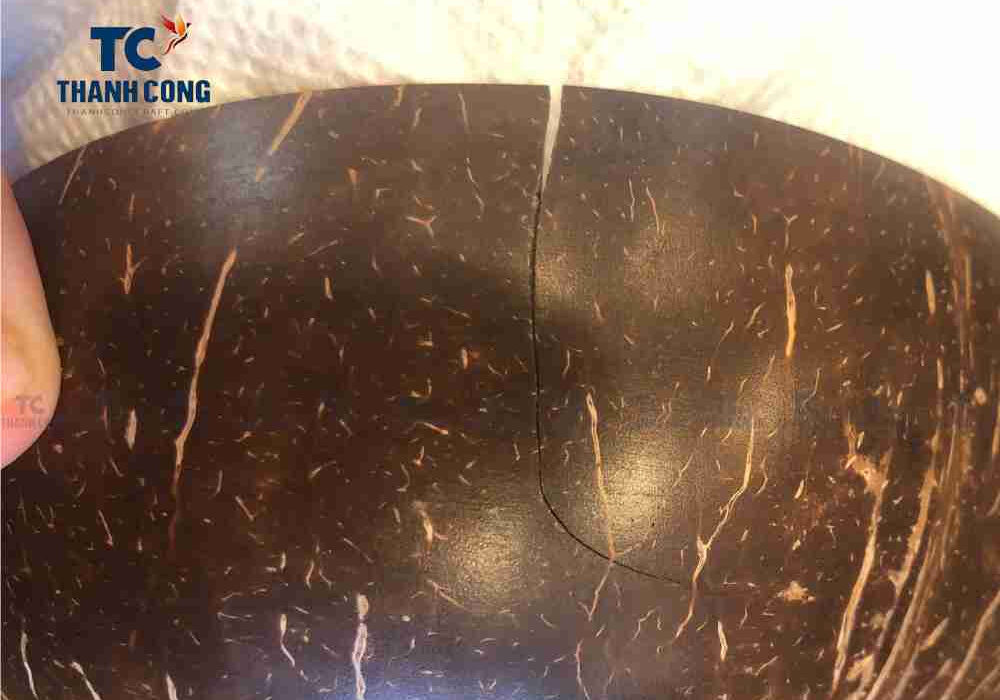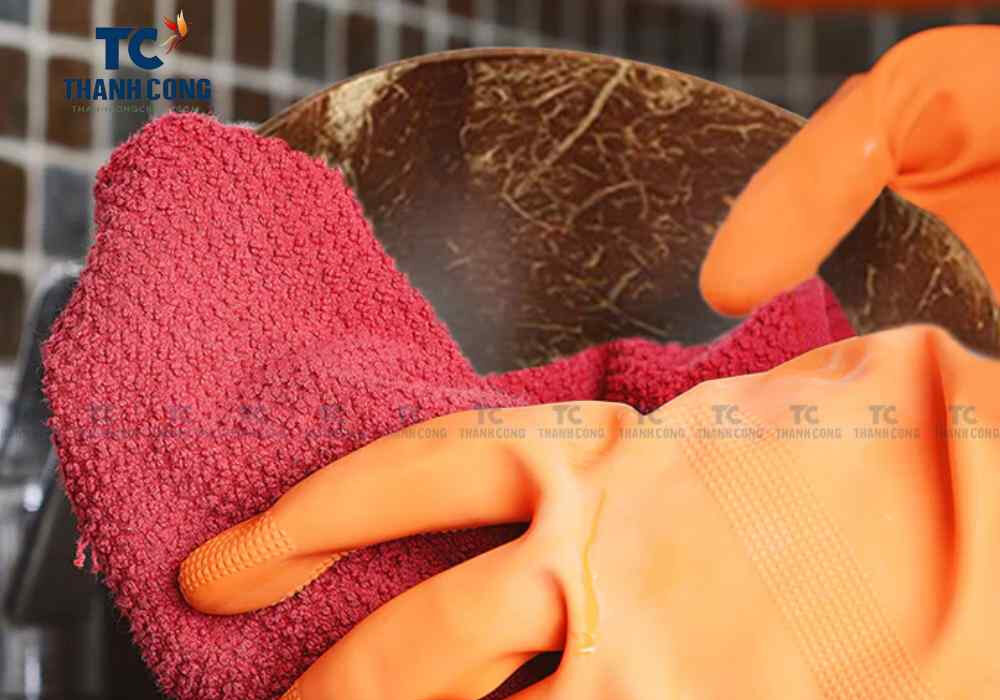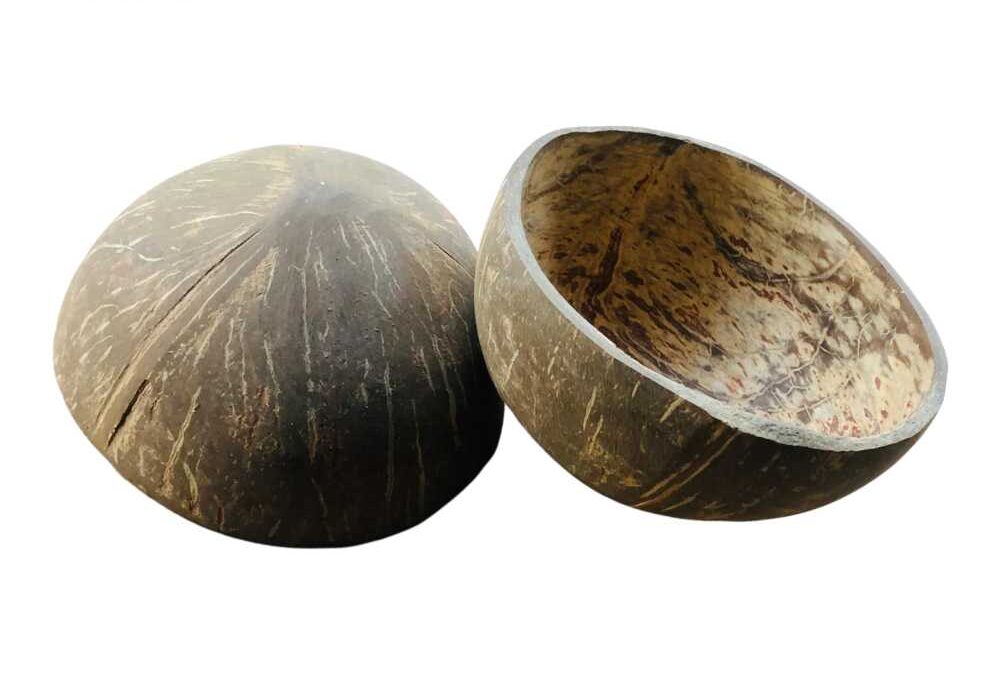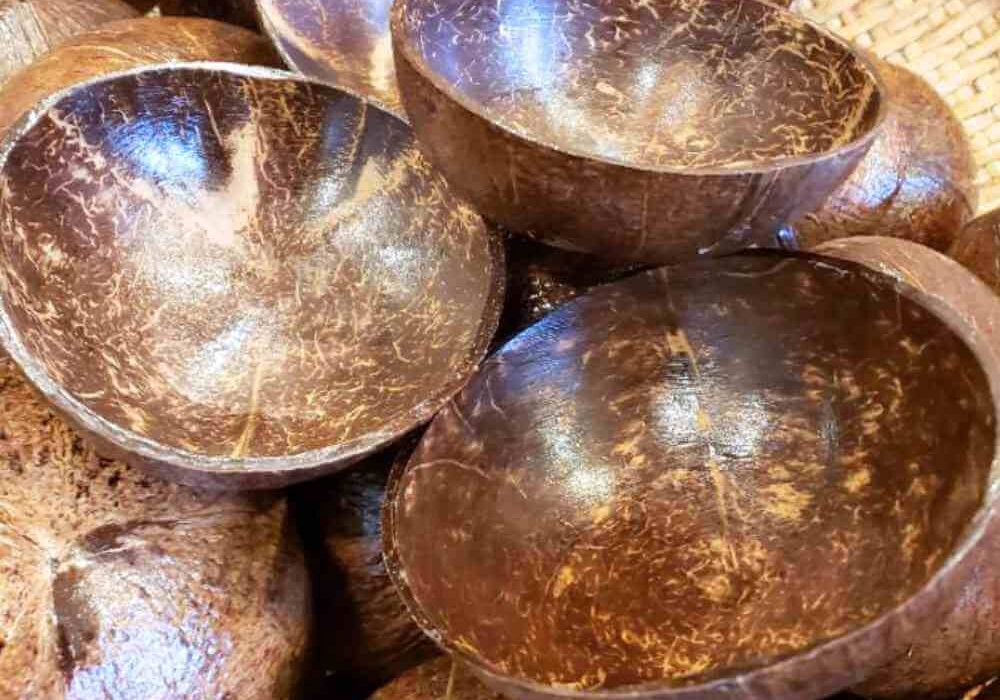Preserving a coconut shell is important to ensure its longevity and natural beauty. Coconut shells are vulnerable to cracking and rotting over time due to exposure to moisture, which can damage their structural integrity and make them unsuitable for use. Let’s see how to preserve a coconut shell in the following article!

Preserving the shell with varnish or clear sealant helps protect it from moisture and prevents it from cracking or rotting, ensuring that it can be used for decorative or functional purposes for a long time.
In addition, preserving a coconut shell can enhance its appearance, bringing out its natural texture and colour. This can make the shell more visually appealing and attractive, which is especially important for handicrafts or decorative items.
Overall, preserving a coconut shell is essential in ensuring its longevity, beauty, and usability.
Contents
1. Cleaning the Coconut Shell
- Washing the coconut shell with water;
- Removing debris and dirt on the shell;
- Smoothening the surface of the shell with sandpaper.
Washing the coconut shell with water is the first step in removing any loose dirt or debris on the shell’s surface. This helps ensure that the shell is free of contaminants before further cleaning and processing.
Removing debris and dirt on the shell involves using a brush or a scraper to remove any stuck-on debris or dirt that was washing alone gently cannot remove. This step ensures the shell is thoroughly cleaned and ready for further processing.
Smoothening the surface of the shell with sandpaper is the final step in preparing the shell for preservation or use. This step involves using sandpaper to smooth out any rough edges or surfaces on the shell, making it easier to handle and work with. Sanding can also enhance the shell’s appearance by highlighting its natural texture and colour.
Following these steps, you can effectively clean and prepare a coconut shell for further processing or use in various applications.

2. Drying the Coconut Shell
Drying the coconut shell is crucial to preserve a coconut shell. Here are the details of allowing the coconut shell to dry completely and the importance of doing so before coating:
2.1 Importance of Drying the Coconut Shell
- Prevents Mold and Mildew Growth: Coconut shells are porous and can easily absorb moisture, which can cause mould and mildew to grow on them. Drying the coconut shell helps to prevent this.
- Prevents Cracking: If a coconut shell is coated with varnish or sealant before it is scorched, the moisture trapped inside can cause the shell to crack as it dries. Drying the shell first ensures that it will not crack after coating.
- Improves Adhesion: Coatings, such as varnish or sealant, adhere better to dry surfaces. Drying the coconut shell completely before coating it ensures that the coating will stick to the surface properly.
2.2 Steps for Drying the Coconut Shell
- Place the coconut shell in a well-ventilated area where it can air dry naturally. Avoid exposing it to direct sunlight or heat, which can cause the shell to crack.
- Before handling it further, please wait until the coconut shell is completely dry to the touch.
2.3 Importance of Drying the Shell Before Coating
- Applying a coating, such as a varnish or a sealant, to a coconut shell that is not completely dry can cause the shell to crack or cause the coating to bubble.
- Allowing the coconut shell to dry entirely before coating ensures that it will adhere to the surface correctly and will not crack after coating.
Allowing the coconut shell to dry entirely before preservation or use is essential in ensuring its longevity and preventing damage. Drying the shell helps prevent mould, mildew growth, and cracking and ensures that coatings adhere to the surface properly.

3. Coating the Coconut Shell
Coating the coconut shell with varnish or clear sealant is essential to preserve a coconut shell and protect it from moisture, cracking, and rotting.
Applying varnish or clear sealant to the coconut shell is essential in preserving and protecting the shell from moisture, cracking, and rotting. Drying time and repeating the coating process ensures the shell is adequately coated and protected.
Here are the details of applying varnish or clear sealant, protection from moisture, cracking, and rotting, drying time and repeating the coating process:
3.1 Materials Needed for Coating
- Varnish or clear sealant;
- Paintbrush or foam brush;
- Sandpaper (optional);
- Cleaning cloth (optional).
3.2 Steps for Coating the Coconut Shell
Applying Varnish or Clear Sealant
- Using a paintbrush or foam brush, apply a thin layer of varnish or clear sealant to the coconut shell. Make sure to cover the entire surface evenly.
- Let the first coat dry completely before applying a second coat. You can lightly sand the surface with sandpaper before applying the next coat to help the varnish or sealant adhere better.
- Repeat this process until you have achieved the desired level of protection and shine.
Protection from Moisture, Cracking, and Rotting
- Coating the coconut shell with varnish or clear sealant helps to protect it from moisture, cracking, and rotting.
- Varnish or clear sealant creates a protective barrier on the surface of the coconut shell, preventing moisture from entering and causing damage.
Drying Time and Repeating the Coating Process
- Drying time can vary depending on the type of varnish or clear sealant used. Follow the manufacturer’s instructions for drying time.
- After the first coat has dried, lightly sand the surface with sandpaper to help the varnish or sealant adhere better before applying the next coat.
- Repeat the coating process until you have achieved the desired level of protection and shine.
3.3 Importance of Coating the Coconut Shell
Coating the coconut shell with varnish or clear sealant helps to preserve the coconut shell from moisture, cracking, and rotting. The coating also gives the coconut shell a shiny and polished look, making it more visually appealing.

4. Storing the Coconut Shell
Storing the coconut shell properly is crucial for preserving it long. Here are the details of keeping the shell in a cool and dry place and avoiding direct sunlight:
4.1 Importance of Proper Storage
- Proper storage of the coconut shell ensures it remains dry and moisture-free, which can cause rotting.
- It also prevents exposure to direct sunlight, which can cause fading and discolouration.
4.2 Materials Needed for Storage
- A dry and cool place.
- A container or box to store the coconut shell in.
4.3. Steps for Proper Storage
Keeping the shell in a Cool and Dry Place
- Choose a cool and dry place to store the coconut shell. Avoid areas with high humidity or moisture.
- Ensure that the storage area is free from dust and debris, which can accumulate on the coconut shell and damage its surface.
- Store the coconut shell in a container or box with a lid to protect it from dust and moisture.
Avoiding Direct Sunlight
- Direct sunlight can cause the coconut shell to fade and lose colour.
- It is essential to store the coconut shell in a shaded area or cover it with a cloth or sheet if it is exposed to direct sunlight.
Proper storage of the coconut shell is essential to ensure its longevity and preservation. Keeping the shell in a cool and dry place and avoiding direct sunlight will help prevent rotting, discolouration, and other forms of damage.
The above article is the information about “how to preserve a coconut shell“. If you have any futher questions, don’t hesitate to send us an email at info@thanhcongcraft.com or leave us a message at WhatsApp: +84967485411. Hope to serve you soon! Best regard!
Check out for more: coconut bowl wholesale and other products category!












